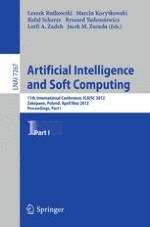The two-volume set LNAI 7267 and LNCS 7268 (together with LNCS 7269) constitutes the refereed proceedings of the 11th International Conference on Artificial Intelligence and Soft Computing, ICAISC 2012, held in Zakopane, Poland in April/May 2012. The 212 revised full papers presented were carefully reviewed and selected from 483 submissions. The papers are organized in topical sections on neural networks and their applications, computer vision, image and speech analysis, data mining, hardware implementation, bioinformatics, biometrics and medical applications, concurrent parallel processing, agent systems, robotics and control, artificial intelligence in modeling and simulation, various problems od artificial intelligence.
